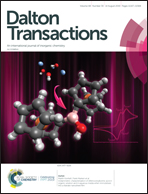Infrared excited Er3+/Yb3+ codoped NaLaMgWO6 phosphors with intense green up-conversion luminescence and excellent temperature sensing performance
Abstract
The Er3+/Yb3+-codoped NaLaMgWO6 phosphors were synthesized via a traditional high-temperature solid-state reaction method. The temperature sensing performance was thoroughly investigated by studying the temperature-dependent up-conversion (UC) emission intensity ratio in the range of 293–533 K. A remarkable enhancement of green UC emission, as well as enhanced temperature sensitivity, were observed by increasing the Yb3+ concentration. The maximum absolute sensor sensitivity was 2.29% K−1 at 533 K. When the pump power of the 980 nm laser increased from 200 to 1000 mW, a slightly elevated temperature from 293–307 K was achieved in the compounds. Using the prepared phosphors and a 940 nm NIR chip, a green-emitting LED device was developed to confirm the applicability of our prepared phosphors for solid-state lighting. As a temperature probe, the prepared phosphor detected that the temperature increased from 286 K to 315 K when the drive current was increased from 90 mA to 300 mA. These results suggest that the Er3+/Yb3+-codoped NaLaMgWO6 phosphors have a potential application in solid-state lighting and optical thermometry.



 Please wait while we load your content...
Please wait while we load your content...